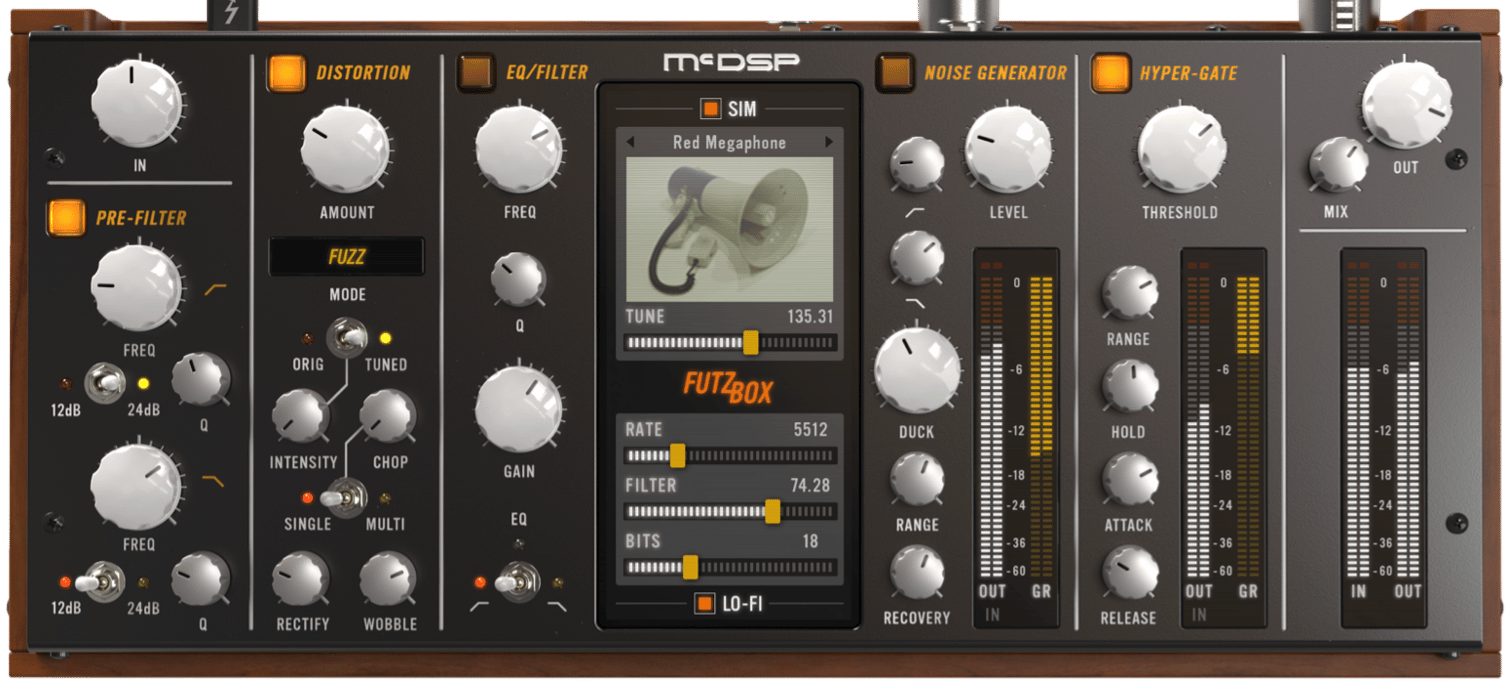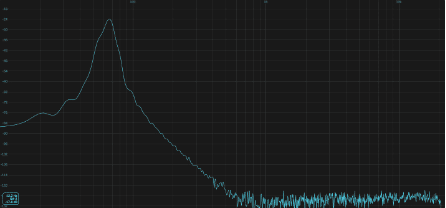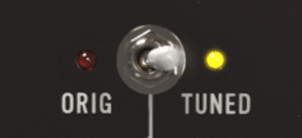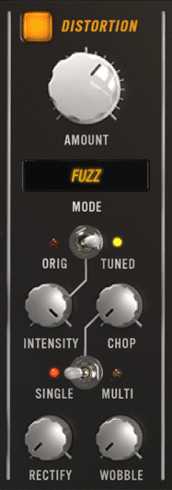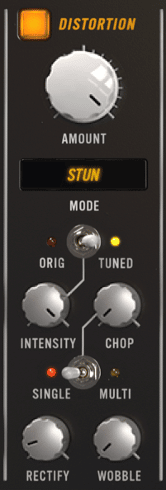It’s extremely common to apply saturation to low-end heavy instruments, such as bass guitar, synth bass, and kick drum. But there’s a problem: Saturating a low-end heavy instrument will almost always cause that instrument to lose more low-end than desired.
So… how can you add distortion without destroying the low end?
Enter the FutzBox Plug-In by McDSP!
FutzBox is a distortion and noise generator plug-in for creating low-fidelity versions of audio signals, and it has many unique distortion controls for an endless supply of creative effects. One such control is the Tuned Intensity Mode, which is the perfect tool for resolving this low-end saturation issue.
Let’s discuss this low-end issue in more detail, and then we’ll see how FutzBox fixes the problem.
Why Does Saturation Remove Low-End?
To gain a better understanding of this concept, check out the frequency spectrum images below. The one on the left represents a sub bass that is not being saturated, while the one on the right represents that same sub bass with saturation applied to it.
The unsaturated sub bass is represented almost exclusively by a clean waveform that shows its fundamental frequency. On the other hand, the saturated sub bass has much more going on; the harmonics caused by the saturation appear to be almost as loud as the fundamental frequency, which is where all the bass’ low end is living.
The bass’ harmonics are so loud that they overpower its low-end, rendering it almost inaudible. The increased amount of harmonics also compete with other elements in the mix.
Where Does FutzBox Come into Play?
FutzBox’s Tuned Intensity Mode makes this problem very easy to solve.
FutzBox’s Tuned Intensity Mode Engaged
If you’re working with a low-end heavy signal that you want to saturate heavily, all without disrupting the low-end’s power and fidelity, simply switch on the Tuned Intensity Mode and dial up the Intensity knob! This Intensity Mode allows more low-end to “survive” the distortion processing, thus leaving it intact while saturating the rest of the signal as expected.
Here are a couple audio examples so that you can hear FutzBox’s Tuned Intensity Mode in action. We also included screenshots of the exact settings we used for these examples down below, along with versions of these examples with the Original Intensity Mode engaged so you can hear the difference between the Modes!
Notice how the Intensity knob is turned all the way up for both examples. That’s because the higher the Intensity knob is set, the more low-end bypasses the saturation processing!
Want to check out FutzBox for yourself? Try out a free 14-day, fully functional FutzBox trial
here.As always, we hope you learned something new! Be sure to sign up for our newsletter below to stay up to date on all things McDSP. We’ll see you next time!
